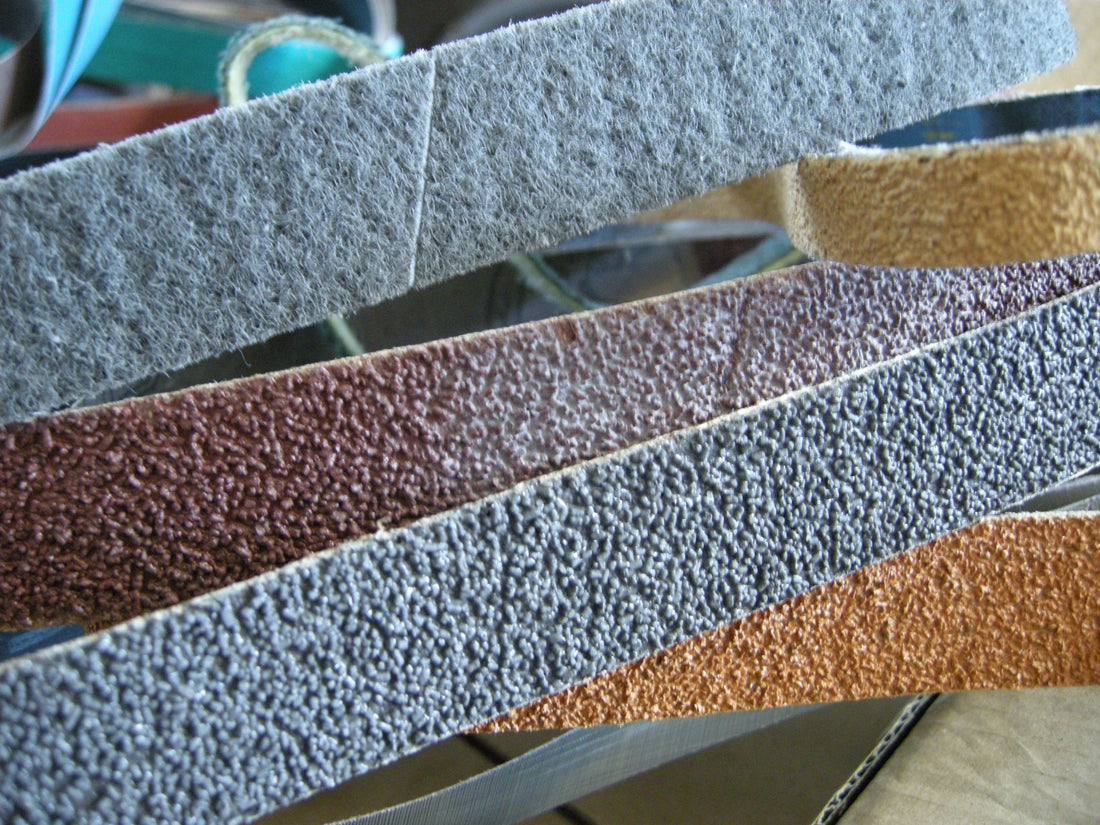
What grit abrasive to use?
Share
Many people ask what grit abrasive to use for sharpening and polishing knives. First, it is important to understand what grit means. Grit is the measurement of grain size of abrasives. Higher grit number means finer, smaller grains of abrasives.grit is related to how many holes per inch exist in the screen used to grade the abrasive.
Higher grits mean smaller scratches but slower material removal. As such it is important to start off with a coarse abrasive and progress to finer grains after removing all the scratches left from the previous abrasive for fast efficient sharpening and polishing.
A good tip to tell if you have ground the entire surface with a new grit is to first paint the surface with a sharpie brand marker. Other brands may work but in my experience many of them won't actually draw on metal. When you have ground away all the sharpie markings you will have ground the entire surface with that grit and can progress to the next grit.
As for what progression of grits to use and what grit to start with, I hope the following chart will help. You can either use the first of each grit listed, the last of each grit listed or both. Skipping from the 1st of one row to the 2nd of the next, or skipping rows is not recommended and will make the process take a lot longer. Using both grits on each row may make the process slightly faster but most speed advantage may be lost changing between grits.
| 36~40 | massive metal removal with large surface areas, good for initial flattening of knife blanks with deep pits or other defects. |
| 60~80 | Good for roughing in the bevel of a blade and minor shaping. |
| 120~180 | For refining a bevel after using a coarser grit and grinding a new tip after it breaks off. |
| 240~300 | For removing nicks in a knife and fixing a rounded over bevel. |
| 400~600 | Getting a knife medium sharp. Good enough for basic kitchen knife sharpening but I would recommend going further for wood carving knives. |
| 800~1200 | Getting a knife really sharp. Will cut through wood, meat and anything else easily. Black emery compound is very close to 800 grit. |
| 1500~2000 | Razor sharp and reaching a reflective polish. Green Chrome compound is typically close to 2000 grit and may be used instead. |
Higher grits then 2000 won't make a knife noticeably sharper. They will however improve the polish of the knife and make the reflection clearer. Getting sandpaper over 2000 grit is difficult so you generally switch to diamond based lapping compounds above this grit if you haven't already. These are generally measured in microns instead of grit.
Microns work the opposite way of grit. The smaller the micron value, the finer the abrasive. A lower micron rating equivalent to a higher grit.
Here is a Microns to grit chart to convert between diamond abrasive micron rating to grit. Listed microns are picked to correspond to commonly sold sizes. When given a range of size, use the largest micron given to figure out its equivalent grit.
Microns to Grit
| 0.5 Micron |
46000 Grit |
| 1.0 Micron |
22000 Grit |
| 1.5 Micron |
14000 Grit |
| 2.0 Micron | 10000 Grit |
| 2.5 Micron |
8500 Grit |
| 3.0 Micron | 7000 Grit |
| 3.5 Micron |
5800 Grit |
| 4.0 Micron | 5000 Grit |
| 5.0 Micron |
4000 Grit |
| 6.0 Micron | 3300 Grit |
| 7.5 Micron | 2600 Grit |
| 8.0 Micron | 2400 Grit |
| 10.0 Micron |
1900 Grit |
| 12.0 Micron | 1600 Grit |
| 14.0 Micron |
1300 Grit |
| 20.0 Micron |
900 Grit |
| 22.0 Micron | 800 Grit |
| 28.0 Micron |
650 Grit |
| 40.0 Micron |
440 Grit |
| 54.0 Micron | 320 Grit |
| 84.0 Micron | 200 Grit |